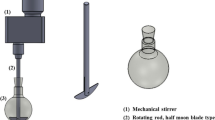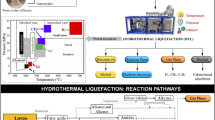Abstract
This study demonstrates the utility of a flow-through enzyme immobilized silica microreactor for lipid transformations. A silica micro structured fiber (MSF) consisting of 168 channels of internal diameter 4–5 μm provided a large surface area for the covalent immobilization of Candida antartica lipase. The specific activity of the immobilized lipase was determined by hydrolysis of p-nitrophenyl butyrate and calculated to be 0.81 U/mg. The catalytic performance of the lipase microreactor was demonstrated by the efficient ethanolysis of canola oil. The parameters affecting the performance of the MSF microreactor, including temperature and reaction flow rate, were investigated. Characterization of the lipid products exiting the microreactor was performed by non-aqueous reversed-phased liquid chromatography (NARP-LC) with evaporative light scattering detector (ELSD) and by comprehensive two-dimensional gas chromatography (GC × GC). Under optimized conditions of 1 μL/min flow rate of 5 mg/mL trioleoylglycerol (TO) in ethanol and 50 °C reaction temperature, 2-monooleoylglycerol was the main product at >90% reaction yield. The regioselectivity of the Candida antartica lipase immobilized MSF microreactor in the presence of ethanol was found to be comparable to that obtained under conventional conditions. The ability of these reusable flow-through microreactors to regioselectively form monoacylglycerides in high yield from triacylglycerides demonstrate their potential use in small-scale lipid transformations or analytical lipids profiling.







Similar content being viewed by others
Abbreviations
- APTES:
-
3-(Aminopropyl)triethoxysilane
- DAG:
-
Diacylglycerol
- DO:
-
Dioleoylglycerol
- EE:
-
Ethyl oleate/C18:1 ethyl ester
- ELSD:
-
Evaporative light scattering detector
- FID:
-
Flame ionization detector
- GC × GC:
-
Comprehensive two-dimensional gas chromatography
- HPLC:
-
High performance liquid chromatography
- MAG:
-
Monoacylglycerol
- MO:
-
Monooleoylglycerol
- MSF:
-
Micro structured fiber
- NARP-LC:
-
Non-aqueous reversed-phased liquid chromatography
- PCF:
-
Photonic crystal fibers
- PDMS:
-
Poly-dimethylsiloxane
- PMMA:
-
Poly(methyl-methacrylate)
- pNP:
-
p-Nitrophenol
- pNPB:
-
p-Nitrophenyl butyrate
- SEM:
-
Scanning electron microscope
- TAG:
-
Triacylglycerol
- TO:
-
Trioleoylglycerol
- U:
-
Unit of lipase activity
References
Watts P, Wiles C (2007) Recent advances in synthetic micro reaction technology. Chem Commun 5:443–467
Watts P, Wiles C (2007) Micro reactors: a new tool for the synthetic chemist. Org Biomol Chem 5:727–732
Mason BP, Price KE, Steinbacher JL, Bogdan AR, McQuade DT (2007) Greener approaches to organic synthesis using microreactor technology. Chem Rev 107:2300–2318
Kawaguchi T, Miyata H, Ataka K, Mae K, Yoshida J (2005) Room-temperature Swern oxidations by using a microscale flow system. Angew Chem Int Ed 44:2413–2416
Lu SY, Watts P, Chin FT, Hong J, Musachio JL, Briard E, Pike VW (2004) Syntheses of 11C- and 18F-labeled carboxylic esters within a hydrodynamically driven micro-reactor. Lab Chip 4:523–525
McCreedy T (2000) Fabrication techniques and materials commonly used for the production of microreactors and micro total analysis systems. Trends Anal Chem 19:396–401
Carvalho AT, Lima RR, Silva LM, Simões EW, Silva MLP (2009) Three-dimensional microchannels as a simple microreactor. Sens Actuat B 137:393–402
Ma J, Liang Z, Qiao X, Deng Q, Tao D, Zhang L, Zhang Y (2008) Organic-inorganic hybrid silica monolith based immobilized trypsin reactor with high enzymatic activity. Anal Chem 80:2949–2956
Xie C, Ye M, Jiang X, Jin W, Zou H (2006) Octadecylated silica monolith capillary column with integrated nanoelectrospray ionization emitter for highly efficient proteome analysis. Molec Cell Proteom 5:454–461
Phan NTS, Brown DH, Styring P (2004) A facile method for catalyst immobilisation on silica: nickel-catalysed Kumada reactions in mini-continuous flow and batch reactors. Green Chem 6:526–532
Godino N, Campo FJ, Muñoz FX, Hansen MF, Kutter JP, Snakenborg D (2010) Integration of a zero dead-volume pdms rotary switch valve in a miniaturized (bio) electroanalytical system. Lab Chip 10:1841–1847
Irimescu R, Iwasaki Y, Hou CT (2002) Study of tag ethanolysis to 2-MAG by immobilzed Candida antarctica lipase and synthesis of symmetrically structured TAG. J Am Oil Chem Soc 79:879–883
Akoh CC, Chang SW, Lee GC, Shaw JF (2007) Enzymatic approach to biodiesel production. J Agric Food Chem 55:8995–9005
Holton C, Meissner K, Herz E, Kominsky D, Pickrell G (2004) Colloidal quantum dots entrained in micro-structured optical fiber In: Durvasula LN (ed) Fiber lasers: technology, systems, and applications, Proceedings of SPIE Bellingham 5335:258–265
Marchetti JM, Miguel VU, Errazu AF (2007) Possible methods for biodiesel production. Renew Sust Energy Rev 11:1300–1311
Lowry OH, Rosebrough NJ, Farr AL, Randall RJ (1951) Protein measurement with the Folin phenol reagent. J Biol Chem 193:265–275
Dizge N, Keskinler B, Tanriseven A (2009) Biodiesel production from canola oil by using lipase immobilized onto hydrophobic microporous styrene-divinylbenzene copolymer. Biochem Eng J 44:220–225
American Oil Chemists’ Society (1998) Official method Cd 11d-96 mono- and diglycerides determination by HPLC-ELSD In: Firestone D (ed) Official methods and recommended practices of the AOCS, 5th edn. American Oil Chemists’ Society, Champaign
Gibson GTT, Mugo SM, Oleschuk RD (2008) Surface mediated effects on porous polymer monolith formation within capillaries. Polymer 49:3084–3090
Lee DH, Park CH, Yeo JM, Kim SW (2006) Lipase immobilization on silica gel using a cross-linking method. J Ind Eng Chem 12:777–782
Cass T, Ligler FS (1998) Immobilized biomolecules in analysis: a practical approach, Oxford University Press, Oxford
Takahashi H, Li B, Sasaki T, Miyazaki C, Kajino T, Inagaki S (2000) Catalytic activity in organic solvents and stability of immobilized enzymes depend on the pore size and surface characteristics of mesoporous silica. Chem Mater 12:3301–3305
Kim MI, Kim J, Lee J, Jia H, Na HB, Youn JK, Kwak JH, Dohnalkova A, Grate JW, Wang P, Hyeon T, Park HG, Chang HN (2007) Crosslinked enzyme aggregates in hierarchically-ordered mesoporous silica: a simple and effective method for enzyme stabilization. Biotech Bioeng 96:210–218
Köse Ö, Tüter M, Ayşe Aksoy H (2001) Immobilized Candida antarctica lipase-catalyzed alcoholysis of cotton seed oil in a solvent-free medium. Biores Tech 83:125–129
Shimada Y, Ogawa J, Watanabe Y, Nagao T, Kawashima A, Kobayashi T, Shimizu S (2003) Regiospecific analysis by ethanolysis of oil with immobilized Candida antarctica lipase. Lipids 38:1281–1286
Watanabe Y, Nagao T, Shimada Y (2009) Control of the regiospecificity of Candida antarctica lipase by polarity. New Biotech 26:23–28
Muñío MM, Esteban L, Robles A, Hita E, Jiménez MJ, González PA, Camacho B, Molina E (2008) Synthesis of 2-monoacylglycerols rich in polyunsaturated fatty acids by ethanolysis of fish oil catalyzed by 1, 3 specific lipases. Process Biochem 43:1033–1039
Dalluge J, Beens J, Brinkman UAT (2003) Comprehensive two-dimensional gas chromatography: a powerful and versatile analytical tool. J Chrom A 1000:69–108
Górecki T, Harynuk J, Panic O (2004) The evolution of comprehensive two-dimensional gas chromatography. J Sep Sci 27:359–379
Semard G, Adahchour M, Focant JF (2009) Chapter 2 basic instrumentation for GC. Compr Anal Chem 55:15–48
Acknowledgments
The authors acknowledge support from an NSERC Discovery grant (Dr. Jonathan Curtis) and from Grant MacEwan University Research Scholarly Activity (Dr. Samuel Mugo). The authors would also like to acknowledge Mr Olivier Niquette (LECO Canada; Mississauga, Ontario) for the generous loan of the GC × GC/FID system, Grant MacEwan Arts and Science faculty, and Ministry of Higher Education, Malaysia for providing graduate student funding (Sabiqah Tuan Anuar). The analytical assistance and support of Dr. Yuan Yuan Zhou and Karl Aryton (Grant MacEwan University, Physical Science department) and all Lipid Chemistry Group and LiPRA members is acknowledged.
Author information
Authors and Affiliations
Corresponding author
About this article
Cite this article
Tuan Anuar, S., Villegas, C., Mugo, S.M. et al. The Development of Flow-through Bio-Catalyst Microreactors from Silica Micro Structured Fibers for Lipid Transformations. Lipids 46, 545–555 (2011). https://doi.org/10.1007/s11745-010-3522-0
Received:
Accepted:
Published:
Issue Date:
DOI: https://doi.org/10.1007/s11745-010-3522-0




